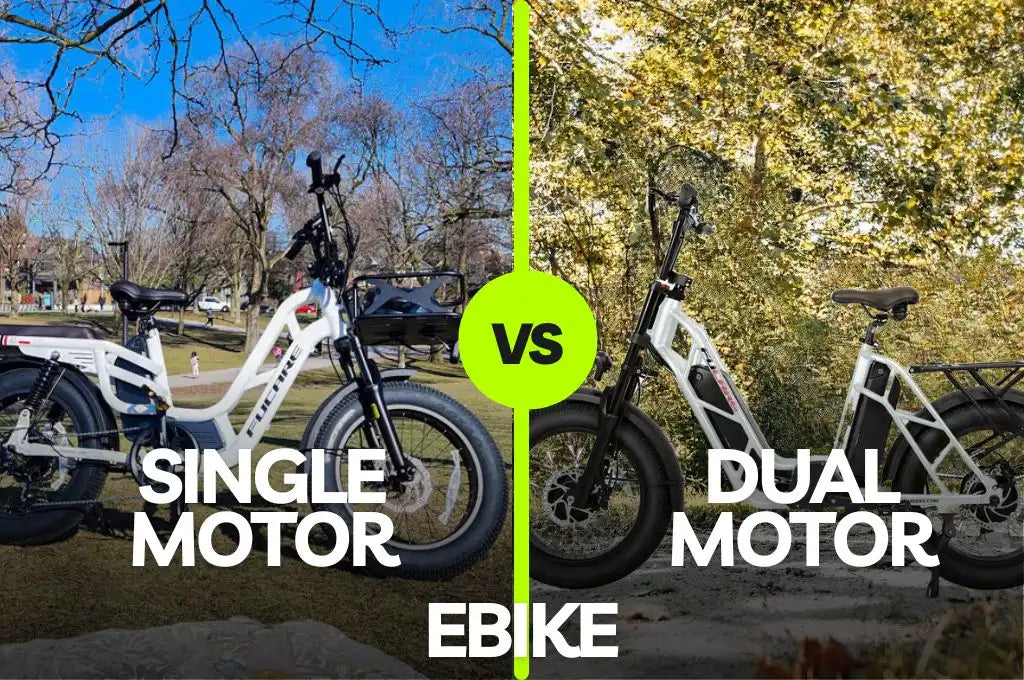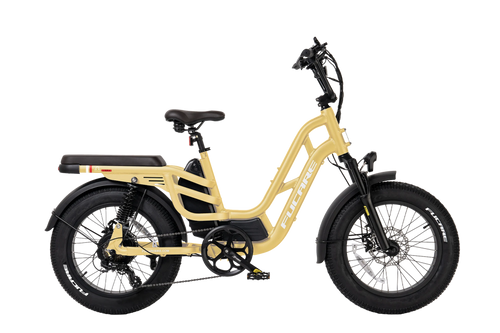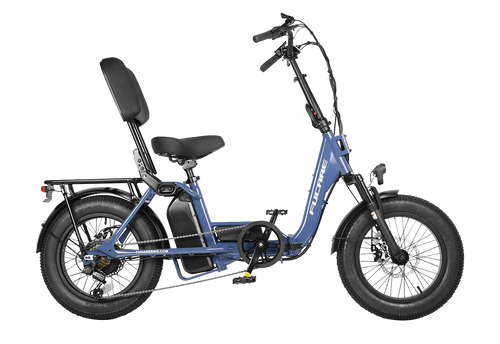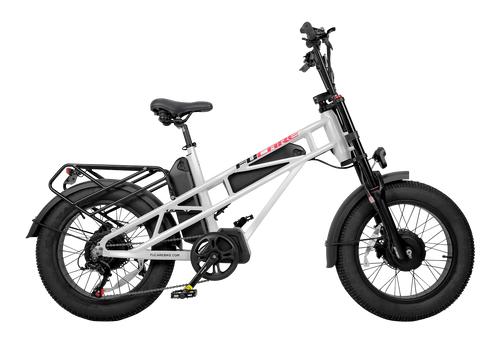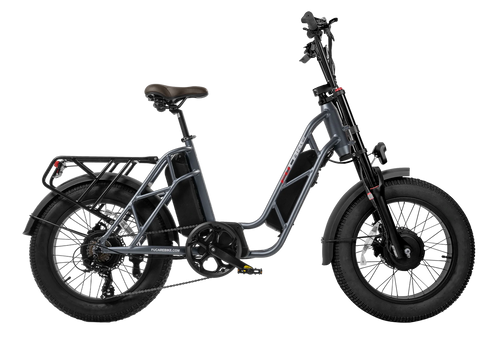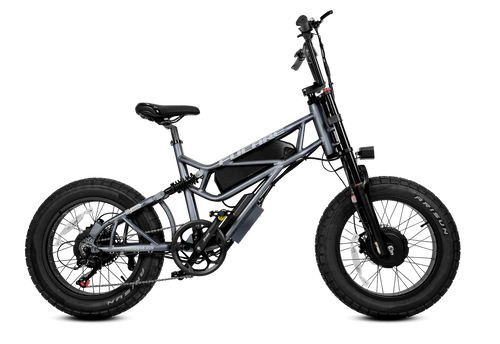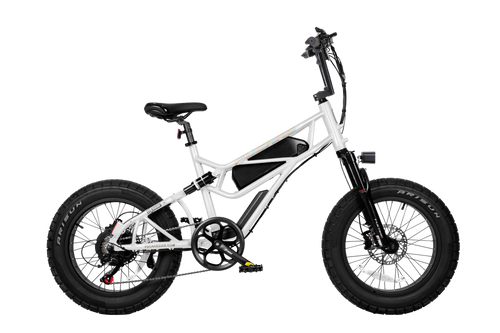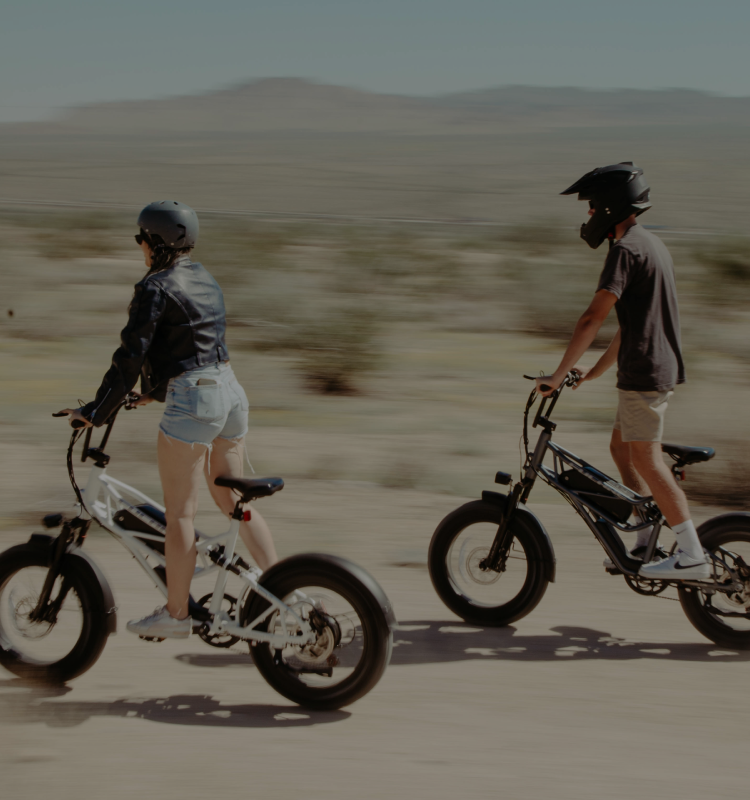Mid Drive vs. Hub Motor eBikes: A Comprehensive Comparison
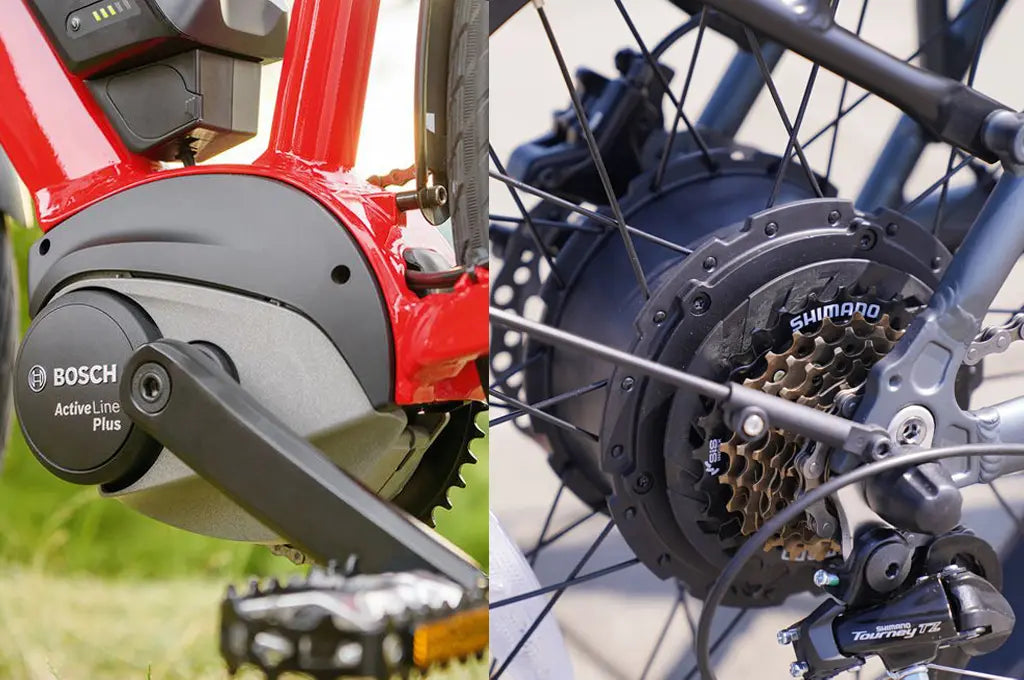
The main difference between hub-drive and mid-drive eBikes is their efficiency on different terrains. Hub-Drives perform better on flat roads, while Mid-Drives excel on steep hills. Hub motors are more efficient for urban use, while Mid-Drives are ideal for off-road and hilly conditions.
But the choice between these two types of eBike motors is not just about where you ride; it’s also about how you ride and what you value most in an eBike.
Do you prioritize simplicity, cost, and low maintenance? Or are you looking for maximum power, responsiveness, and the ability to conquer tough trails?
In this article, we'll break down the key differences between Hub-Drive and Mid-Drive eBikes, exploring their advantages and disadvantages to help you decide which one best suits your needs.
Hub Drive Motor Pros and Cons
A mid-drive motor is positioned in the center of the eBike frame, typically integrated around the bottom bracket. This placement allows the motor to drive the crank, working in conjunction with the bike’s chain and gears.
Key Advantages of Mid Drive Motors
1. Superior Climbing Power
Mid-drive motors are engineered to provide exceptional torque and power, which makes them particularly effective in tough and demanding riding environments. Their superior torque output allows riders to effortlessly tackle steep inclines, offering the strength and efficiency needed to climb challenging hills with ease.
This makes mid-drive motors an ideal choice for those who frequently encounter rugged terrains or hilly landscapes.
2. Natural Riding Experience
Mid-drive motors blend smoothly with the rider's pedaling, creating a more natural and enjoyable ride. Many mid-drive systems use a torque sensor instead of a cadence sensor, which makes pedaling feel more realistic.
The torque sensor adjusts the motor's power based on how hard the rider is pedaling, ensuring the electric assistance matches the rider's effort. This design gives a riding experience that feels closer to traditional cycling, making it more comfortable and fun for the rider.
You may want to know Torque Sensor vs Cadence Sensor on Ebikes
3. Balanced Weight Distribution
A mid-drive motor's strategic placement at the bike's center not only lowers the center of gravity but also ensures a harmonious balance of weight distribution.
This balanced setup translates to enhanced maneuverability in various riding scenarios. In urban environments, the bike's precise control and effortless maneuvering through tight corners inspire confidence.
On rugged mountain trails, the superior stability provided by the balanced weight distribution prevents the bike from tipping over or feeling unstable on uneven surfaces. This confidence-inspiring handling empowers riders to tackle challenging terrain with ease.
Potential Drawbacks of Mid Drive Motors
1. Higher Cost
Compared to hub motors, which are generally more straightforward in design and installation, mid-drive motors often come with a premium price tag. The intricate integration with the bike's frame and the more sophisticated components involved contribute to this increased cost, both in terms of initial purchase and potential repair expenses.
2. Increased Wear on Drivetrain Components
Since mid-drive motors utilize the bike's existing drivetrain to transfer power, the strain on components like chains, cassettes, and chainrings can be more pronounced. This can lead to more frequent maintenance and replacement of parts, especially for riders who frequently engage in high-torque activities such as hill climbing or off-roading.
Hub Motor Pros and Cons
A hub motor is located in either the front or rear wheel hub of an eBike. This design is simpler and more direct: the motor is housed within the wheel, providing propulsion by spinning the wheel itself.
Key Advantages of Hub Motors
1. Simplicity and Ease of Maintenance
One of the key advantages of hub motors is their inherent simplicity and ease of maintenance. As self-contained units that operate independently of the bike's drivetrain, hub motors eliminate the need for frequent maintenance associated with mid-drive systems. The absence of extra wear on chains, cassettes, and other drivetrain components translates to reduced maintenance costs and longer component lifespans.
In terms of installation and replacement, hub motors offer a significant advantage over mid-drive motors, particularly for those who prefer a DIY approach. The process typically involves swapping out the front or rear wheel, which can be accomplished with basic tools and minimal mechanical knowledge.
2. Silent Operation
Hub motors, especially direct-drive models, are renowned for their quiet operation. Unlike traditional chain-driven systems, which can generate noise and vibrations, hub motors deliver a smoother, more serene riding experience. This is a particular advantage in urban environments where noise pollution is a concern.
The silent nature of hub motors contributes to a more pleasant and less disruptive commute for both the rider and pedestrians.
3. Consistent Power Output Even During Gear Shifts
One of the notable advantages of hub motors is their ability to maintain steady power and acceleration, even while the rider is changing gears. Unlike mid-drive motors that may temporarily reduce power to accommodate shifting, hub motors operate independently of the bike's drivetrain.
This means that riders experience a smooth and seamless ride with no interruptions or delays in power delivery when switching gears. This feature is particularly valuable in urban settings where frequent stops, starts, and gear changes are common.
Potential Drawbacks of Hub Motors
1. Reduced Efficiency on Steep Terrain
Hub motors generally face challenges when it comes to delivering the torque required for climbing steep hills. Unlike mid-drive motors, which utilize the bike’s gears to optimize power output, hub motors lack this advantage, making them less effective on hilly terrain.
The limited torque capability of hub motors often leads to slower acceleration and reduced performance when navigating inclines. As a result, riders may experience a significant drop in speed and find themselves needing to exert more effort to maintain forward momentum.
2. Less Natural Pedal Feel
Hub motors, which directly drive the rear wheel, often provide a riding experience that feels less natural compared to other motor types. This is because hub motors deliver power independently of the rider's pedaling effort, creating a disconnect between the rider’s input and the bike's response.
This can result in a riding experience that feels less engaging and may require some adjustment, especially for cyclists who are accustomed to the more synchronized feedback of traditional or mid-drive bikes.
Is a Mid-Drive Motor Always More Efficient Than a Hub Motor?
Based on testing data shared by a rider, hub motors tend to be more efficient on flat terrain and slight inclines, offering around a 20% efficiency advantage at moderate power levels. However, mid-drive motors outperform on steep hills, showing approximately 60% greater efficiency in those conditions.
In mixed real-world conditions, including a combination of flat roads, hills, and descents, the hub motor was about 11% more efficient overall. However, the choice between a mid-drive and a hub motor depends heavily on the riding environment: mid-drive motors are ideal for off-road or hilly terrain, while hub motors perform better on flat, paved surfaces.
Conclusion
Both mid-drive and hub motor e-bikes offer unique advantages, and the best choice ultimately depends on your individual needs and preferences. By carefully considering factors such as riding style, terrain, budget, maintenance, and riding experience, you can select the e-bike motor that best suits your requirements and ensures a satisfying and enjoyable riding experience.
Continue reading

Is Electric Bike Riding a Good Way to Lose Weight?
